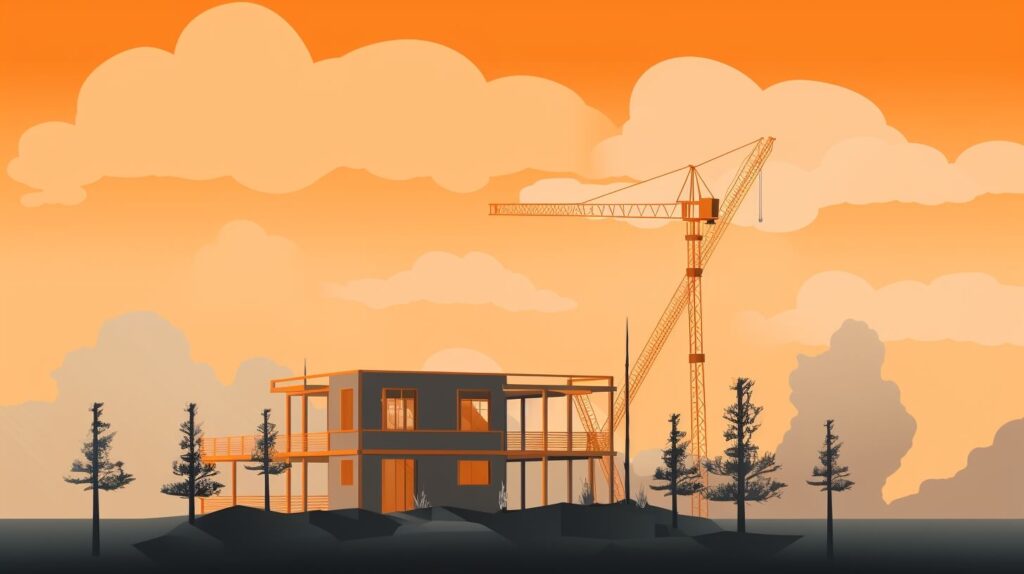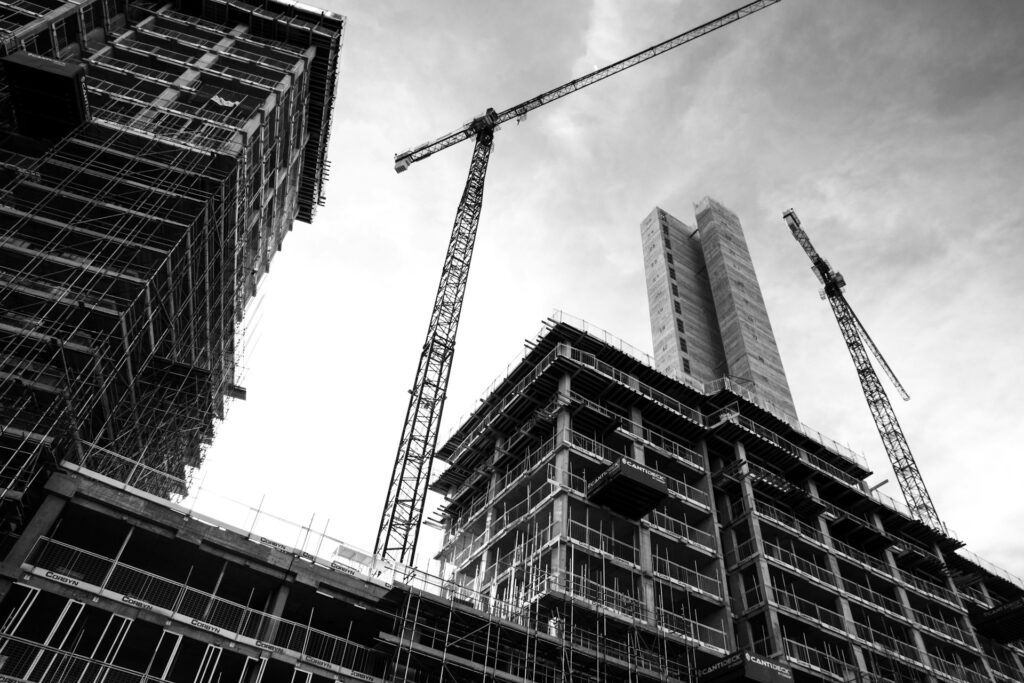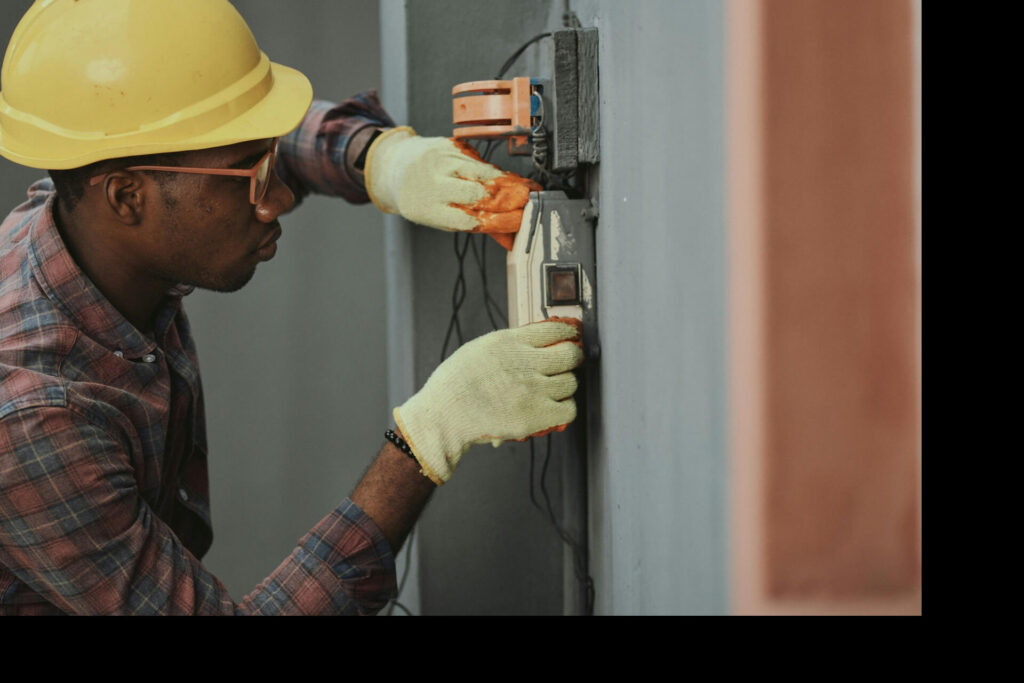
We are reader-supported. When you buy through links on our site, we may earn an affiliate commission.
Safety on the construction site might seem like common sense to someone who’s worked in the industry their entire career. Unfortunately, many best practices and procedures end up overlooked when they become familiar. Safety guidelines are an essential part of any construction project. What details belong on every expert-level construction safety plan?
Refresh the Basics
Safety is part of every activity on a construction site, and it should be at the forefront of everyone’s mind. This article isn’t going to spend a lot of time on the basics, but everybody needs a periodic refresher on the basics. It’s far too easy to get comfortable with the things that keep you safe on the job site and start taking them for granted.
Think about accessories like a ring or a watch you wear daily. Eventually, you forget it’s there until something changes. Maybe you forget to put on your watch before leaving the house one day, and everything feels off. With safety guidelines, if you forget something, you or someone else could get hurt. Take the time to refresh yourself on the basics as often as you feel it’s necessary. You might be surprised what falls by the wayside when you follow the same routine every day.
Understanding Common Problem Areas
One straightforward way to create an expert-level set of safety guidelines is to understand where the most common problems lie. There are two separate categories to explore here, though they may tend to overlap. Those are the 10 most common OSHA safety violations and the events OSHA has dubbed the “Fatal Four.” The latter accounts for a large portion of on-the-job fatalities, especially in somewhat dangerous careers like construction.
OSHA’s Fatal Four
According to OSHA statistics, there are upwards of 12 work-related fatalities in the United States every day. The Fatal Four account for a large portion of these deaths.
- Falls are responsible for 36% of workplace fatalities.
- Struck-by-object events lead to 10% of workplace fatalities.
- Electrocutions cause 9% of workplace fatalities.
- Caught in/between events are the reason for 2% of workplace fatalities.
Most Common OSHA Safety Violations
Here is where you might notice an overlap. The top 10 most common OSHA safety violations include items related to the Fatal Four. As of 2017, the 10 most common violations were:
- Fall protection requirements, with 6,072 violations
- Hazard communication, with 4,176 violations
- Scaffolding, with 3,288 violations
- Respiratory protection, with 3,097 violations
- Lockout/tagout, with 2,877 violations
- Ladders, with 2,241 violations
- Powered industrial trucks, with 2,162 violations
- Machine guarding, with 1,922 violations
- Fall protection and training requirements, with 1,523 violations
- Electrical wiring methods, with 1,405 violations
Looking at these two lists makes it more evident where the significant risks are. It’s not an exhaustive list, but it gives you a good foundation for building a comprehensive set of safety guidelines for your job site.
Provide the Correct Safety Equipment
Again, this is another tidbit you might tend to write off as common sense, but it is essential to include. For the most part, the average construction worker will own all the necessary safety equipment to do their job beyond a pair of gloves and a hard hat. However, there’s no guarantee they’re maintaining it correctly and ensuring it is safe to use.
Fall harnesses and fall arrest equipment are one example. Many teams still rely on fall protection belts when working at heights, when full harnesses are safer and more effective. They might be more complicated, but they provide better protection and reduce the risk of injury or death in the event of a fall.
Ensure your construction company is providing sufficient safety equipment, and test, maintain and replace it as needed to prevent accidents on the job site.
Use the Buddy System
Everyone understands the need to meet deadlines. Often, that means assigning team members to solo tasks to get those jobs done. While this is sometimes necessary, working alone can be dangerous. If something goes wrong — you fall from a height or get struck by a falling object — you may not be able to call for help.
Here’s where the buddy system is vital. Even if you’re conscious after an injury, there’s no guarantee you’ll be able to access your phone or other tools to call for help. Having a buddy nearby or working on the same task ensures that even if the worst should happen, you’ve got someone who has your back and can call 911. Don’t underestimate the buddy system, even if it seems overly simplistic. It can quite literally save your life.
Get Your Point Across
The classic scare tactics your instructors might have used to convince you to stay safe on the job aren’t as effective as they used to be. As a culture, Americans have become desensitized to violence and gore — there are entire movie series focused on nothing but, after all. If you’re trying to reinforce safety, you’re going to have to be more creative.
Bryan Clayton, the CEO of Your Green Pal, had one fantastic idea when demonstrating how to safely use a wood chipper. He filled a large balloon with red Jell-O and threw it into a running machine. His team got showered in Jell-O as the chipper did its work, which got a good chuckle out of everyone, but it reinforced the point. That balloon could have been a body part, and instead of a tasty dessert, they might end up covered in something far gorier and less pleasant. Sometimes, it takes memorable examples like this to illustrate how dangerous some machinery can be.
Enforce Proper PPE Requirements
Personal protective equipment (PPE) is essential to any construction function. The requirement of closed-toed shoes often isn’t enough when you’re working with heavy machinery and even heavier building materials on a job site. Jobs may require hard hats, work vests, gloves, hearing protection, and more in order to stay compliant and protect workers’ long-term health and well-being in the industry.
Employers must require employee protective equipment that complies with OSHA standards. Providing OSHA-compliant PPE, or at least reimbursing employees for them, can be an easy way to ensure they follow requirements at all times. You may even want to offer a specific selection you’re willing to pay for to ensure that choices are within the company’s budget and compliant with safety regulations.
Keep Things as Clean as Possible
This tip might seem counterintuitive on a construction site, where dirt, dust and debris are commonplace and even part of the job, but keeping the site as clean as humanly possible can improve workplace safety. You shouldn’t have to worry about whether or not you’ll be able to walk from one task to the next without slipping on dust piles or tripping over material scraps that are lying around. Dirty workplaces are dangerous. It’s as simple as that.
Take time to set up a housekeeping program that involves everyone on your team. It’s everyone’s responsibility to keep the site as clean as possible. The goal here isn’t perfect white-glove cleanliness. It’s to remove the obvious messes to keep them from becoming hazardous.
Test, Inspect and Maintain Equipment
From the smallest pneumatic hammer to the largest crane or excavator, the average construction site has abundant equipment. It’s crucial to inspect each piece of equipment on the site before use, test it regularly and maintain it according to the manufacturer’s recommended schedule.
If you’re worried about delays, create periods of scheduled downtime for inspection and maintenance. This advice is especially critical for larger equipment that could cause severe damage or cost a lot of money to repair if they break down midway through a job. Don’t cut corners here, and don’t rush. An ounce of prevention is worth a pound of cure, and in the construction industry, a little bit of preventive maintenance can save you a lot of hassle.
Incorporate New COVID-19 Safety Requirements
2020 has introduced new challenges with the coronavirus pandemic that’s been sweeping the globe. In places where construction companies are essential, business owners still face the challenge of keeping their team members safe while trying to meet deadlines. That means masks, temperature checks and social distancing, plus staggered schedules and other precautions to reduce the number of people on site at any given time.
Here’s another place where you don’t want to cut corners. Yes, most of your crew will be grateful to be working while so many people are out of a job due to the pandemic, but that gratitude doesn’t extend to faulty safety practices that lead to them bringing the virus home to their family or household members. Take time to carefully incorporate CDC-recommended safety practices to ensure everyone on your job site stays as healthy as possible as you navigate this pandemic.
Stay Aware of Developing Trends
Safety trends aren’t in stone. If they were, steel workers would still eat lunch hundreds of feet above New York City like they did during the Empire State Building’s construction. Yes, the famous “Lunch Atop a Skyscraper” is a staged photo, but it’s a fantastic example of how safety standards and trends have changed in the intervening decades.
Stay aware of developing construction safety trends, even if you don’t make changes or adopt them right away. Being in the know is often enough to keep you ahead of the curve, so if any major changes come down the pike, you’ll be ready to adopt them as they become necessary.
Networking Isn’t Only a Hiring Practice
The construction industry is inherently competitive, but there are a few instances when you should be networking instead of competing. Industry safety is one of those. Another company in your region might be competing with you for jobs, but no one wants to see anyone get injured on the job site.
Start sharing safety tips and tricks with your competitors. Doing so won’t compromise your company or the secrets you keep to set you apart in an ultra-competitive industry. Instead, it will help make construction as a whole safer. Safety tips that help you comply with OSHA standards are things to share, not hoard.
Always Trust Your Gut
This tip might sound like New Age hocus-pocus, but after you’ve been in the industry for a while, you start to realize your instinct is one of the most useful tools in your arsenal. Even if nothing seems wrong on the surface, if you’ve got a gut feeling that something is off, it’s usually right.
Gut instinct isn’t merely an old wives’ tale. People who boast about having excellent intuition have honed the skill over time. To make fewer mistakes, listen to that inner voice when it speaks up. You won’t be sorry.
Safety Is Everyone’s Responsibility
Construction safety isn’t something one person can ensure on their own. It’s everyone’s responsibility to keep the workplace safe. While sticking to OSHA regulations is essential, sometimes you have to think a little outside the box to cover the holes and fill in all the gaps OSHA standards might not cover.







